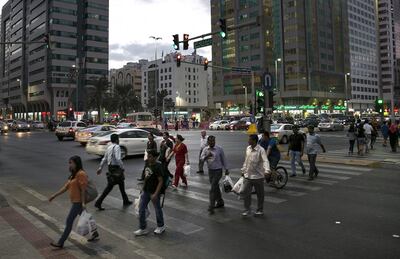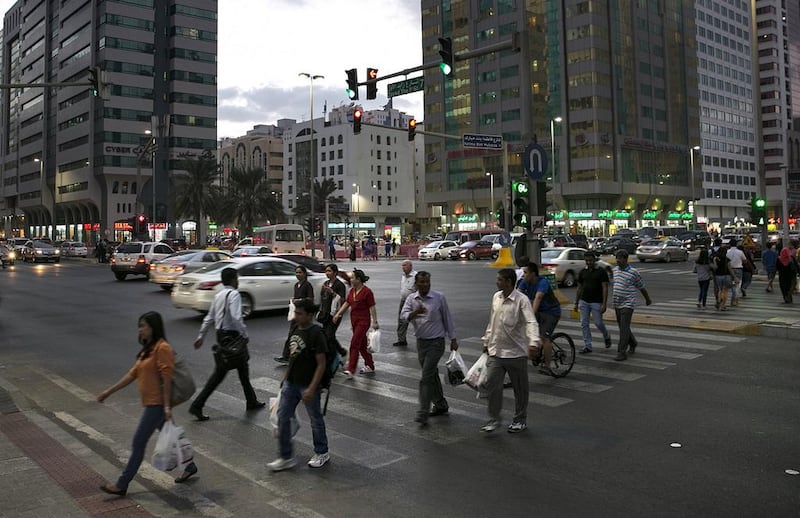It was back at the turn of the last century when colonial officials from British India carried out a survey of the population of what was then called the Trucial States.
In 1901, they calculated, there were a little in excess of 40,000 people living across what is now the UAE. Around 22,000 were women, a slender majority in favour of females.
By the late 1950s, another census estimated that the combined population of the seven emirates was still only around 50,000 people, of which around half were living in Abu Dhabi.
The story since then has been an extraordinary explosion of economic activity and prosperity, transforming both the UAE and the number of people who live here.
Just how much the county has grown is revealed in new Government figures released yesterday which show a population of over nine million – a more than 100-fold increase in just six decades.
The report, by the Federal Competitiveness and Statistics Authority, also reveals that there are now close to three males for every female living in the country.
The figures give the population as 9,121,167 at the end of 2016, of which 6,298,294 are men and 2,822,873 are women.
Read more: Population of UAE has soared over nine million, new official figures show
The figures tell the story of the UAE rise as an economic powerhouse, but also of an economy that often defies world economic trends.
The announcement was hailed by Nikola Kosutic, the head of research in Dubai for the MENA division of the market research company Euromonitor International.
“This is the holy grail of data,” he said. “we have been waiting for this for years. We are so excited.”
The lack of official statistics on population, and the difficulties of making the right business decisions about the future, has resulted in a loss of GDP of 0.3 per cent, Euromonitor has calculated.
“It is a huge amount of money,” Mr Kosutic said. “This is the most basic data and we have never had it before.”
Jean Paul Pigat, the founder of Lighthouse Research, an independent Dubai-based research company, said that in the boom years leading up to 2009, the UAE was experiencing a population growth of 15 per cent.
“This was clearly unheard of anywhere else in the world,” he says. “The UAE’s most notable strength as an economy is that it is able to import labour on any scale that it wants.”

The reverse is also true, he points out, so that when the economy is performing less well, the population can shrink or at least increase at a much slower rate, exacerbating the problem.
The value of demographic data to the Government, Mr Pigat says, it that it: “Allows them to foresee consumption and investment trends both in the short and long term.”
Previous estimates of the UAE’s population have been based on calculations by the UN’s Population Division, although Dubai regularly publishes updates of its own numbers. Currently the UN calculates the UAE population at 9.69 million, or 94th in the world and slightly higher than the official UAE number.
According to the Dubai Statistics Centre, the Emirate’s resident population as of August 2017 stands at approximately 2,327,000, while another half a million commute to the city for work every day.
In 1975, four years after the UAE was born, it was estimated that just a total of 557,887 people were living in the seven emirates, with Abu Dhabi having the largest population.
By 1995 this had grown to 2.4 million, and in 2008, the official Government website reported a population of 4.8 million, meaning that in the nine years since, it has nearly doubled, with Dubai now matching Abu Dhabi for the most populous emirate.
According to the Dubai Statistics Centre, the Emirate’s resident population currently stands at approximately 2,327,000.
According to the UN, the annual growth rate of 2.47% in 2016 is still one of the steepest in the world.
The UAE’s imbalance of men to women is a result of the country’s high dependence on foreign male labour especially in the construction industries. According to 2015 figures from the Pew Institute, this is the highest in the world.

Expatriates also heavily outnumber UAE nationals. The UN figures show a population weighted to those of working age, with relatively few elderly, reflecting the reality that expatriates largely return home when they stop working.
Government policy is to balance the demographic mix of Emiratis and expatriates by 2021.
In 2008, President Sheikh Khalifa bin Zayed, dedicated a programme of national identity: “Aimed at maintaining the country's national identity in an age of globalisation,” according to the official government portal.
“The President's call was in line with the strategic vision adopted by the federal government, which aims to promote and preserve the national identity of the UAE and launch initiatives that will maintain values of the community,” it added
The FCSA says it has been able to use date collected nationally for a calculation that is “of very high accuracy.”
Abdulla Nasser Lootah, Director General, Federal Competitiveness and Statistics Authority, said. “We can now unveil the most up-to-date UAE population for the year 2016. We will be able to update the population number on annual basis.”
Not included in this new calculation are the nationalities of those living in the UAE, nor the percent of the population they represent.
Government officials say that having accurate population data will allow better decisions to be made about the long term planning for the UAE.







